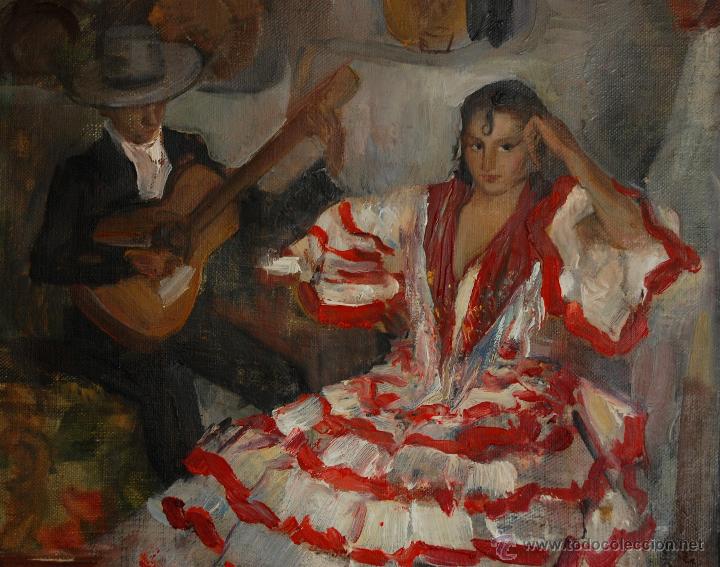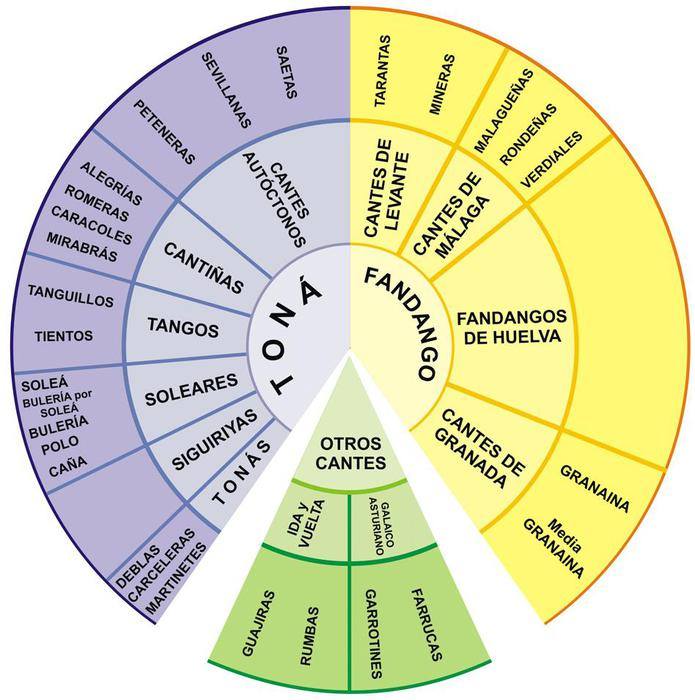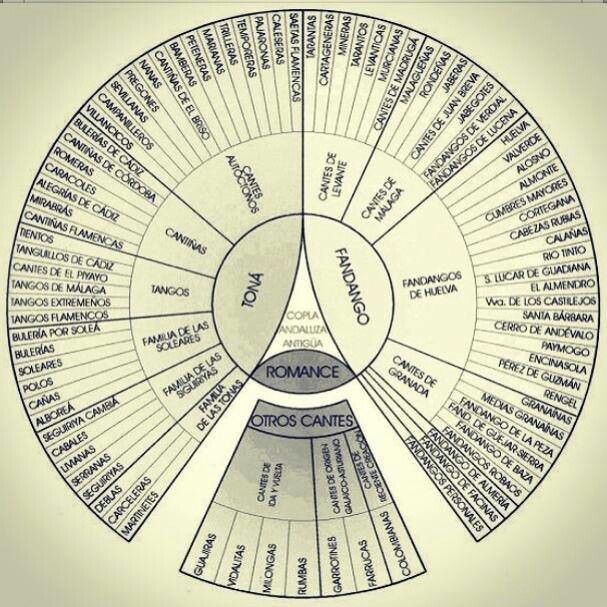flamenco
Fandangos and derivatives
It is one of the more ancient singing style and dance. They are related with the Arabic-Andalusian gypsy dances, such as the zambras and the jarchas. It is said that the fandango was spread for centuries throughout Spain acquiring the character of each region. The moorish Fandango became jotas, alboradas, muñeiras, boleros, malhaos, and many others.

Verdiales
The verdiales are one of the most primitive forms of the Andalusian fandango. It is a singing which comes from the Andalusian Muslims. The name comes from the region of Malaga where they were born. The verdiales are groups of musicians, singers and dancers. They play guitars, violins, tambourines, street music, castanets, canutos and almireces. Their costumes are very cheerful and spectacular. The style is marked by a great polychromy of ribbons. The female costumes remind to the peasants from Malaga in parties and the male costumes are simple: trousers, shirt, strap and waistcoat and a hat made of palm with lots of colours, small looking-glasses and ribbons. The joy of this beautiful music inspired a lot of choreographs during the golden time of the Spanish dancing such as Pilar López, José Toledano, Emma Maleras and Antonio.


Malagueñas
In order to clarify the different forms of the malagueñas we must refer to the people from Malaga that created them. The more antique methods known are attributed to Juan Breva and Enrique el Mellizo even if was Mr. Antonio Chacón (according to Anselmo González Climent) the one who elevated it to the category of “cante grande”. However, Molina and Mairena defended that the enlargement of the malagueña was done by several singers and not only by Chancón. Fosforito el Viejo, Trinidad Navarro, El Canario, El Perote, Ohana: all were singers of this variety. To Enrique Mellizo are attributed two modalities and to Antonio Chacón at least five. Nowadays, stands out the famous singer Enrique Morente. Let’s clarify that the mentioned malagueñas are not interlinked. If we speak about dancing we should date back to the XVIII century when Antonio Boliche, a dance master from Seville who invented the bolero school gathered the “fandango por malagueña” and other popular dances and added them the steps of the French and Italian ballet. The bolero dancing learnt the technique and the malagueñas acquired their elegance. The malagueña was danced by great bolero dancers and presented in many European stages until the opening of the singing…
Fandango. Authr: anonymous
Tu dices que me as querido
gitano de sacromonte
tu dices que me as querido
vas engañando a la gente
dios sabe lo que e sufrió
me esta costando la muerte
You say you’ve loved me
you, gypsy from Sacromonte
you say that you love me
you’re deceiving everybody,
God knows what I’ve suffered
so much that I’m close to death.
Granaínas and media granaína
We only have to mention the granainas and medias granainas before finishing. Even if they are descendants of malagueñas if we see the family tree we will check that they are the most distant from the Malaga trunk. We check in the book Mundo y Formas del Cante Flamenco in which the authors Molina and Mairena do a differentiation of the singings. There are two types: the granaina and media granaina. The granaina is easiest and more beautiful; if it is performed by a good singer it can almost reach the malagueña nature. The media granaína, however, is a song filigreed and affected which produces more admiration than emotion. These singings were orphan when they were born; they were ignored by the world of dancing. It was in the year 2000 when the flamenco dancer Merche Esmeralda danced them for the first time in the flamenco play Tormenta de Arena, with the same tear than the singer Charo Manzano.
Bandolás
The Singer and guitarist Juan Breva from Malaga is also the inventor of the dance abandolao. He gave a slow and flamenco character to the verdiales, turning them into bandolas, generating in the family tree another branch of Malaga. There are different local varieties of the bandola: the rondeñas, the jaberas, the zángano, etc. Like the malagueña, the rondeña went also through the workshop of the Bolera School and had a strong impact in the XIX century.
We only have to mention the granainas and medias granainas before finishing. Even if they are descendants of malagueñas if we see the family tree we will check that they are the most distant from the Malaga trunk. We check in the book Mundo y Formas del Cante Flamenco in which the authors Molina and Mairena do a differentiation of the singings. There are two types: the granaina and media granaina. The granaina is easiest and more beautiful; if it is performed by a good singer it can almost reach the malagueña nature. The media granaína, however, is a song filigreed and affected which produces more admiration than emotion. These singings were orphan when they were born; they were ignored by the world of dancing. It was in the year 2000 when the flamenco dancer Merche Esmeralda danced them for the first time in the flamenco play Tormenta de Arena, with the same tear than the singer Charo Manzano.
Bandolás
The Singer and guitarist Juan Breva from Malaga is also the inventor of the dance abandolao. He gave a slow and flamenco character to the verdiales, turning them into bandolas, generating in the family tree another branch of Malaga. There are different local varieties of the bandola: the rondeñas, the jaberas, the zángano, etc. Like the malagueña, the rondeña went also through the workshop of the Bolera School and had a strong impact in the XIX century.
